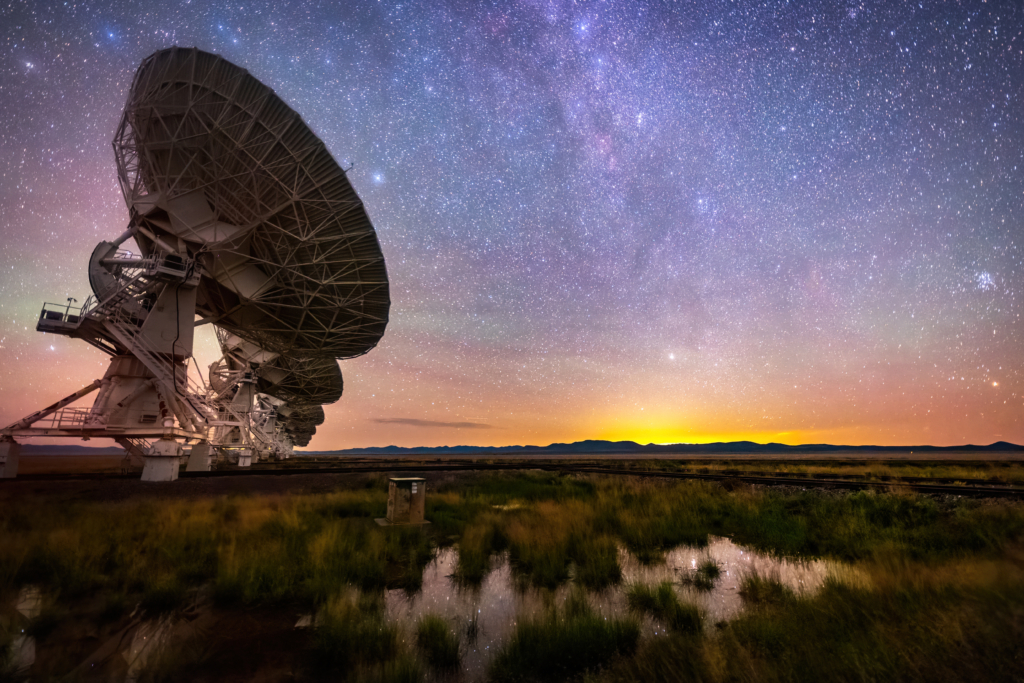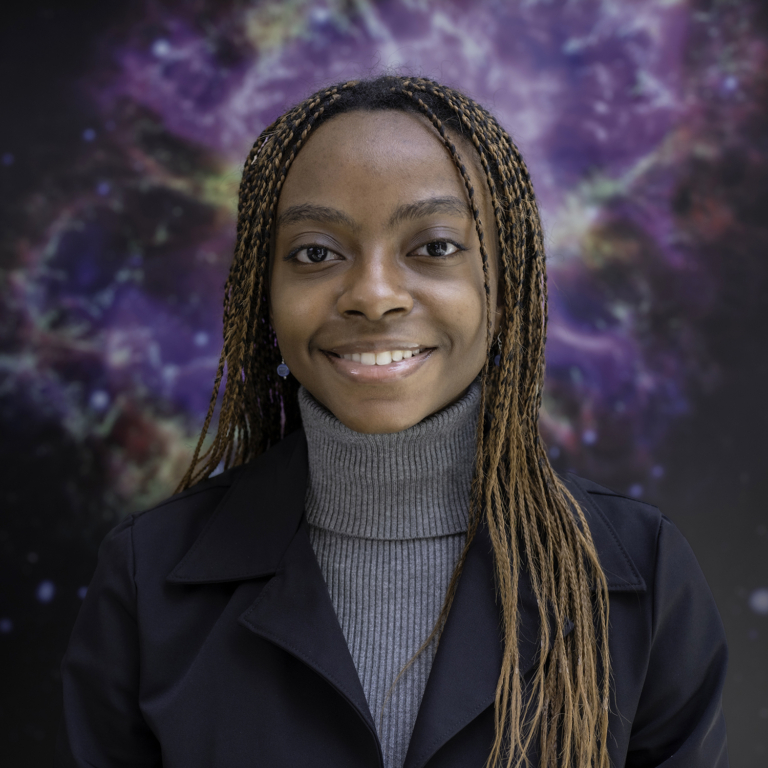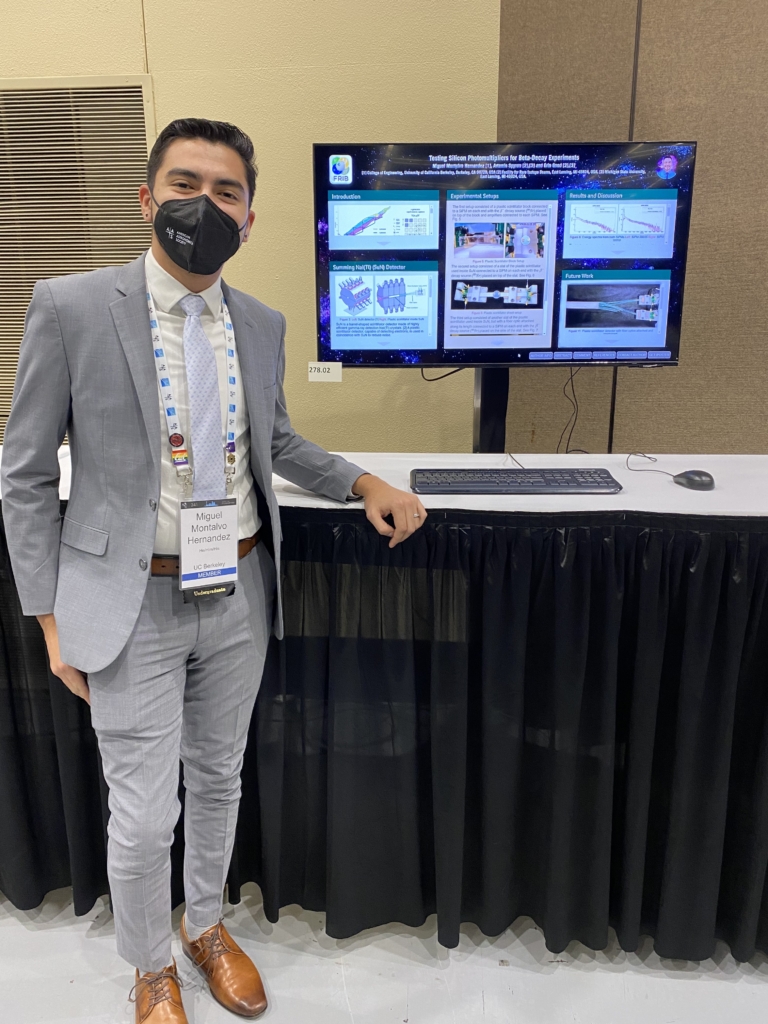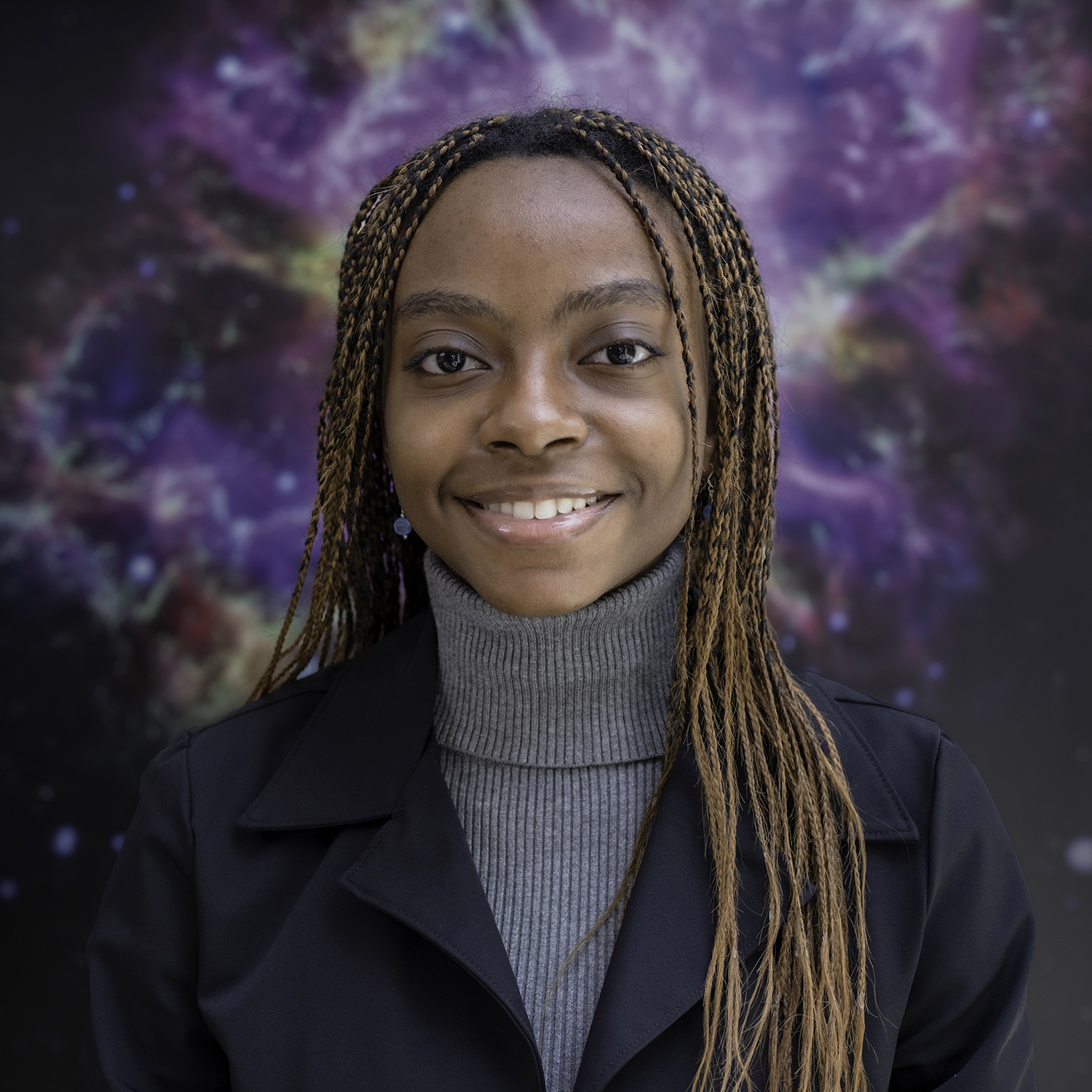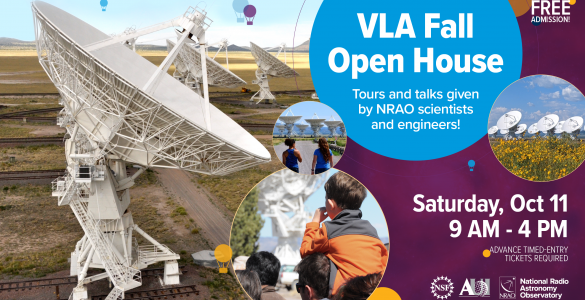Two student researchers from the National Radio Astronomy Observatory’s National Astronomy Consortium (NAC) program were each awarded the prestigious Chambliss Astronomy Achievement Student Awards medal during the 241st proceedings of the American Astronomical Society (AAS).
Doni Anderson and Miguel Montalvo Hernandez, undergraduate researchers who completed their NAC summer research projects in 2022, each received a Chambliss medal for exemplary research in astrophysics.
Doni Anderson, University of Wisconsin at Madison
Anderson— who was hosted at NAC’s partner site at the University of Wisconsin at Madison— received the Chambliss medal for her research entitled, “Three-dimensional mapping of the Gum Nebula.” During her research, Anderson used 3D mapping of dust distribution near the Sun to develop strategies to find the boundary of the Gum Nebula, an emission nebula located roughly 1,470 light-years away from Earth that stretches across the constellations Puppis and Vela in the southern sky. Ultimately, Anderson found that no single automated process could do the job, and mapped the nebula by eye. The team is now ready to model the creation and expansion of the structure.
While Anderson’s Chambliss research has reached its conclusion, the experience, as well as her work with NAC, will continue with her on her academic journey. “I plan to apply many of the skills I learned from my [NAC] mentor, with my summer research and presenting, to my next research plans.”
Anderson is currently a junior at the University of Michigan, and joined NAC in 2022 because she wanted to be a part of a program that offered support to members throughout their academic milestones. “NAC has provided support and resources that helped me push myself in my academics and research,” she said.
Miguel Montalvo Hernandez, Michigan State University
Hernandez— who was hosted at NAC’s partner site at the University of Michigan— received the Chambliss medal for his research entitled, “Testing Silicon Photomultipliers for Beta-Decay Experiments.” During his research, Hernandez explored Silicon Photomultipliers, or SiPMs as an alternative to Photomultiplier Tubes, also called PMTs in the detection of beta-decay. The research indicates that while noise continues to be an issue with SiPMs, geometry limitations can be improved.
Hernandez is currently a senior at the University of California Berkeley who joined NAC in 2021 for the long-term mentorship that extends past the summer research project and throughout members’ careers. “I have received academic and career guidance from my NAC mentors and their sincere recommendations helped me when I was applying to grad school. The support community that I have built among other NAC fellows and alumni is really valuable to me, and the program continues to support me with travel funding to professional conferences where I have presented my research and networked with future colleagues.”
He will continue his NAC-supported research this summer, taking a turn from beta-decay experiments into active galactic nuclei (AGN) and their host galaxies. “I will come back as a NAC fellow this summer, working with professor Jenny Greene at Princeton University. I will be studying a very large AGN sample that was compiled by combining mid-Infrared and optical spectral energy distributions using the Hyper-Supreme Camera Survey (HSC) and the Wide-field Infrared Survey Explorer (WISE),” he said. “My goal is to understand the host galaxies of these AGN by modeling the broadband spectral energy distribution with a combination of AGN and galaxy contributions, to try and understand the star formation histories and stellar masses of AGN hosts, as a function of AGN luminosity, redshift, and environment.”
The Chambliss Astronomy Achievement Student Awards are juried by a volunteer cohort of professional scientists and other members of the astronomical community during the American Astronomical Society conference each January and June. A full list of Chambliss award recipients is available at https://aas.org/posts/news/2023/03/congratulations-aas-241-chambliss-student-award-winners.
The National Radio Astronomy Observatory is a facility of the National Science Foundation, operated under cooperative agreement by Associated Universities, Inc.
About NAC
National Astronomy Consortium (NAC) is a program of the National Radio Astronomy Observatory, a facility of the National Science Foundation, operated under cooperative agreement by Associated Universities, Inc. NAC is a summer research experience program for undergraduate students in the United States who have been underserved by the traditional academic pipeline. The program aims to increase the number of students in STEM fields by helping them to build networks of support for success early in their academic careers and beyond.






